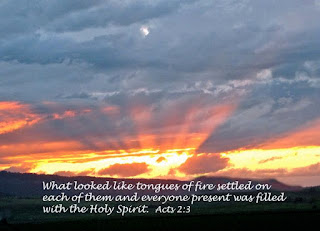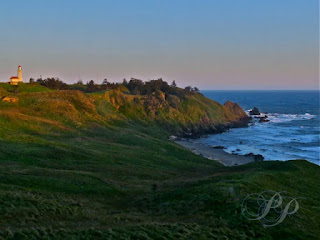Formed high in the Eagle Cap Wilderness of northeast Oregon, the wild and scenic Imnaha River flows seventy three miles along a fault line that parallels the Snake River. In the lower river canyon, massive Columbia River basalt lava flows rise spectacularly above the river. It is some of the most remote country in Oregon, yet hard working cattle ranchers make a living there. A narrow dirt road, whose clay base makes it treacherous in wet weather, snakes high above the river. It is not a road for the acrophobic. Meg and I drove down there on Saturday of Memorial Day weekend, making many stops simply to bask in the vastness of the land and our own insignificance.
Wednesday, May 29, 2013
Friday, May 24, 2013
Not my ego
I realize how much of my life is defined by whom my ego-I "chooses" to be. I am content with MY definition of myself. I forget that it is God's choice, God's call of who I will be. And His call is for my perfection in love, no matter how I try to limit Him.
"The question is not what we intended ourselves to be, but what He intended us to be when He made us." CS Lewis
 |
| Samuel Boardman State Park, OR |
 |
| Mt Jefferson, OR |
Thursday, May 23, 2013
Ladd Marsh Bird Festival
Ladd Marsh provides one of the largest remaining wetlands in Northeast Oregon. The Oregon Department of Fish and Wildlife has done an exceptional job of conserving and expanding this area to provide respite for migratory birds and repose for nesting species. Each year, on the third weekend of May, ODFW and the Friends of Ladd Marsh, as well as the Chamber of Commerce, sponsor a Bird Festival on the marsh. Volunteer birders offer birding assistance at ten sites on the Marsh, and help visitors enjoy the unique viewing opportunities here.
Of special excitement for Meg and me over the weekend was the sighting of a pair of Virginia rails. Although they are relatively common, they remain elusive in the cattails. And, male ruddy ducks, with their blue beaks and "bubbling" mating behavior, are always a treat to see.
 |
| Avocet by her nest and eggs |
 |
| Bittern |
 |
| Ruddy duck with bubbles |
 |
| Stilt |
 |
| Virginia rail |
Saturday, May 18, 2013
Come Holy Spirit
Come Holy Spirit, let me feel you inside me and follow you out of joy, not out of memory or habit.
"When we speak about the Holy Spirit, we speak about the breath of God, breathing in us. The Greek word for 'spirit' is pneuma, which means breath. We are seldom aware of our breathing. It is so essential for life that we only think about it when something is wrong with it.
The Spirit of God is like our breath. God's spirit is more intimate to us than we are to ourselves. We might not often be aware of it, but without it we cannot live a 'spiritual life.' It is the Holy Spirit of God who prays in us, who offers us the gifts of love, forgiveness, kindness, goodness, gentleness, peace and joy. It is the Holy Spirit who offers us the life that death cannot destroy. Let us always pray: "Come, Holy Spirit, come." Henri Nouwen
 |
| Smith Rocks, OR |
 |
| Wallowa River Canyon, OR |
Thursday, May 16, 2013
Returning home through Oregon's volcanic landscapes
Returning from Trinidad, CA to Oregon, Meg and I traveled a back road along the upper Klamath River, from Hwy 101 to Interstate 5. After overnighting in Ashland, we continued into central Oregon by way of Lake of the Woods and Crater Lake. Incredible past volcanic activity dominates the region. Mt McLoughlin reflects in the Lake of the Woods, a steep lava cone built on top of shield volcano, so named because it resembles the flat curve of a warrior's shield.
Crater Lake, formed inside the caldera created after the massive explosion of Mt Mazama, is the deepest lake in the United States. Famous for its snow melt water clarity and deep blue color, the lake draws the visitor into an incredible serenity of silence. We had never visited in snow conditions, so this time was especially meaningful. An impending thunderstorm created excellent light and cloud effects.
We stayed the next night in Redmond. We spent the early morning at Smith Rocks, considered the birthplace of rock sport climbing. Now an Oregon State Park, It offers over one thousand climbing routes. The rocks are "welded tuff," formed when hot ash, exploded into the atmosphere, settles in thick sheets onto the earth's surface, contracting and hardening as it cools.
Finally, we enjoyed the Painted Hills, volcanic ash that has tuned clay like. The ash was laid down in different geological eras, and is colored according to the type of mineral it contains. Whenever possible, we never miss a visit here . The intensity of the colors varies according to the time of day; each hour is its own beauty. The area is only lightly visited, and like Crater Lake, the vastness soothes mind and soul.
 |
| Lake of the Woods |
 |
| Painted Hills |
 |
| Smith Rocks |
 |
| Upper Klamath River |
Trinidad, California
Lying on the coast between Crescent City and Eureka, Trinidad is one of California's smallest incorporated cities (387 residents), Meg and I spent several days there visiting a good friend from our Tonga Peace Corps days. Besides this great personal visit, we enjoyed the spectacular ocean and bay/harbor views in and around Trinidad. It attracts a range of people from surfers to oceanographers, from fishermen to artists. Settled first by Yurok Indians, Trinidad's name is derived from the Spanish. On Trinity Sunday in June 1775, two Spanish ships anchored in the bay and named it for this Catholic holy day.
Moderated by summer coastal fogs, and damp winters, redwood trees in both state and national parks thrive in this area. Meg and I experienced an amazing feeling of insignificance as we looked up at these three hundred foot trees that were nearly a thousand years old. We mere mortals are quite limited on this earth.
Saturday, May 11, 2013
Creating "space"
Thursday, May 9, 2013
The Southern Oregon Coast, Part II
Meg and I continued down the southern Oregon coast at a leisurely pace. The views are spectacular and the State has provided excellent turnouts and wayside parks. This is an area to leave time to see. Every hour of driving offers half a dozen places to pull over and enjoy. Much of this coastline resembles our favorite beaches in New Zealand.
The Southern Oregon Coast, Part I
Meg had never seen the southern Oregon coast south of Florence and I had not be there since 1979. So, with winter to an end, our early spring vegetables starting to grow, and other volunteer activities at a lull, we decided to take off and visited this area. We enjoyed staying in a yurt at Honeyman State Park south of Florence, and a cabin at Cape Blanco State Park south of Coos Bay. We were glad for the heat inside these facilities. The mornings were windy with a temperature of forty, so we did not have to contend with the cold.
The scenery is exceptional. Cape Blanco is considered the western most point in the contiguous United States. Its lighthouse was established in 1870. Interestingly enough, here is an excerpt about this lighthouse location from Wikipedia: In Jules Verne's early science fiction book The Begum's Millions, a Utopian community named Ville-France is established in 1872 on the South Oregon beach. Verne gives the location of this fictitious community as "eighty kilometres north of Cape Blanco".
Shore Acres State Park is located southeast of Coos Bay. The former estate of a civic minded timber man, real estate developer, Louis Simpson, it is lovingly maintained by the Parks division of the State, and is particularly beautiful in the spring.
The scenery is exceptional. Cape Blanco is considered the western most point in the contiguous United States. Its lighthouse was established in 1870. Interestingly enough, here is an excerpt about this lighthouse location from Wikipedia: In Jules Verne's early science fiction book The Begum's Millions, a Utopian community named Ville-France is established in 1872 on the South Oregon beach. Verne gives the location of this fictitious community as "eighty kilometres north of Cape Blanco".
Shore Acres State Park is located southeast of Coos Bay. The former estate of a civic minded timber man, real estate developer, Louis Simpson, it is lovingly maintained by the Parks division of the State, and is particularly beautiful in the spring.
 |
| Shore Acres State Park |
 |
| Shore Acres State Park |
Subscribe to:
Comments (Atom)









































